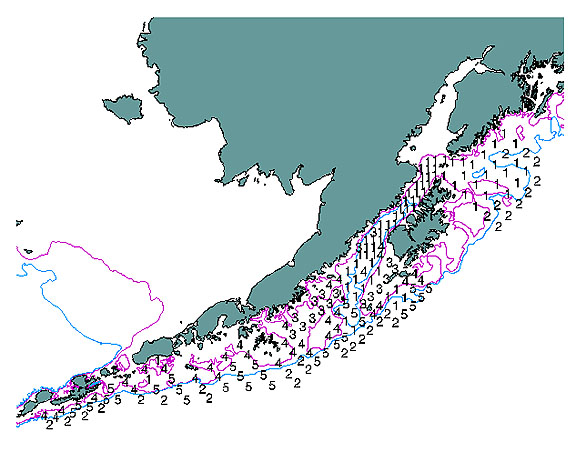
One of the goals of the Northeast Pacific GLOBEC program is to examine the effects of climate variability on plankton and fish populations and how these may respond to past and anticipated future climate change. We have available 10,066 plankton collections from 114 cruises spanning 22 years (1971-1996) which we will use to examine geographic distributions and temporal trends in the dominant egg and larval components of the Northeast Pacific ichthyoplankton and determine how these relate to physical and biotic conditions during this period. Our objective for the first year was to error-check and clean the database and begin to produce a comprehensive atlas of the distribution patterns of 110 taxa (in 27 families) that are important contributors to the ichthyoplankton assemblage. We expanded our scope considerably from what was proposed to include collections off the West Coast and eastern Bering Sea in addition to the proposed research for the Gulf of Alaska. We also extended our time series back to 1971 compared to the proposed time frame (1981-1996) to include sampling prior to the regime shift in the late 1970s. We have now completed verification of the entire database and have begun assembling the atlas. For each of the species included, we will provide maps of the larval and adult distributions along with depth and size distribution, and seasonal and interannual trends in abundance. We have developed polygonal areas represented by each of the sampling stations so that the densities in each tow can be expanded to areal abundances for each year. We are also examining processes associated with onshore transport of fish eggs and larvae and develop cross-shelf exchange tracers composed of offshore ichthyoplankton assemblages. For the latter analysis, we hope to add collections from the 1997 cruises which took place during an anomalously strong northward transport due to ENSO to give us another comparison to make with the strong ENSO in 1983. These samples have been sorted and are in the process of being verified and should be ready by the summer. In the spring of 1999, we will begin to analyze the verified database for temporal temporal (intra- and interannual) variability in species composition, relative abundance, assemblage structure, and distribution patterns of spring ichthyoplankton. We have been running cleaned test data using several multivariate classification techniques to see which provides the most interpretable results. An example of an assemblage map is shown in Fig. 1.

As part of this research, we made two presentations at an International Symposium on Geographical Information Systems in Fisheries Sciences held in early March. We have plans to present more results at the Larval Fish Conference to be held in North Carolina and international fisheries meetings in Poland and in Alaska this coming summer and fall. We have made contacts with other GLOBEC funded projects to find areas of collaboration. We invited Frank Schwing of PFEL to come up and talk to us about accessing his physical data at the relavant temporal and spatial scales that might affect larval distribution and survival.